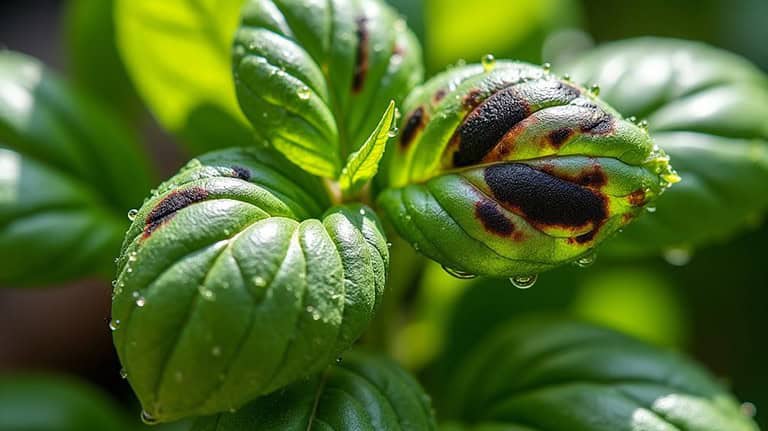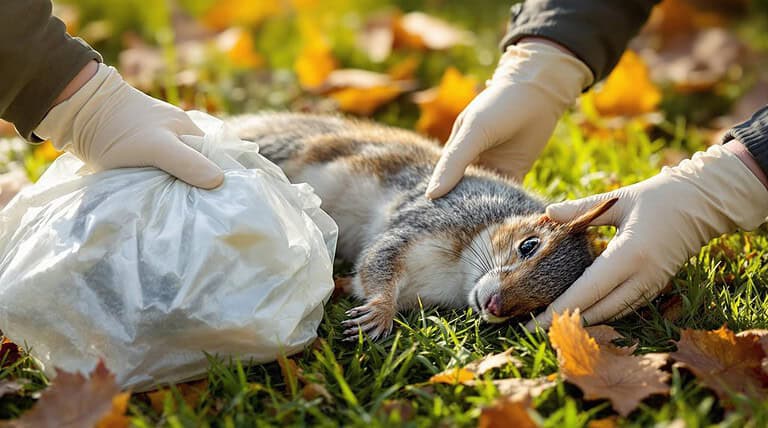Start From Seed or Buy? What’S Best for You?
You’ll save serious cash starting from seeds—about $5 gets you 500 seeds versus one measly seedling! But here’s the catch: you’re signing up for weeks of daily babying, grow lights, and crossing your fingers for germination success. If you’re drowning in garden space or hunting rare heirloom varieties, seeds are your golden ticket. Short on time or dealing with finicky plants? Grab those seedlings and skip straight to the fun stuff—there’s much more strategy behind this choice.
Quick Guide
- Seeds cost significantly less ($5 for 500 seeds versus $5 per seedling) but require weeks of daily care and monitoring.
- Starting from seed offers access to thousands of rare varieties unavailable at nurseries, including disease-resistant and heirloom cultivars.
- Seedlings provide instant gratification and eliminate germination risks, but seeds have 85-95% success rates when properly managed.
- Seeds require equipment like grow lights and trays, while seedlings need only garden space for immediate transplanting.
- Choose seeds for large gardens and variety selection; choose seedlings when time is limited or experience is lacking.
The Real Cost Breakdown: Seeds vs. Seedlings

When you’re standing in the garden center staring at those neat rows of seedlings while clutching a packet of seeds, you’re basically facing the classic “instant gratification versus delayed satisfaction” dilemma that’ll hit your wallet in completely different ways.
Here’s the kicker: one seedling costs about $5, while 500 seeds cost the same amount! The financial reality has gotten even harsher since seedling prices have increased by 25% or more since 2020, making that decision between seeds and starts an increasingly expensive one for your garden budget. Growing from seed can also help you select disease-resistant varieties that thrive in your specific environment, ultimately benefiting your crop yield.
Time Investment and Garden Planning
Starting seeds means you’ll need weeks of daily monitoring, grow light setups, and careful transplanting schedules. Seeds require consistent warmth and light for successful germination and growth, which means maintaining steady conditions throughout the entire process. Additionally, incorporating soil amendments can significantly boost seedling health and improve your garden’s overall success.
Convenience Factor for Busy Gardeners

When you’re juggling work, family, and maybe even planning that next camping trip to test out your homegrown vegetables around the campfire, buying established seedlings can be your gardening lifesaver since they eliminate weeks of daily seed-tending, watering schedules, and the whole setup of grow lights or seed-starting equipment that clutters up your kitchen counter.
You can literally grab a flat of tomato plants on your way home from the grocery store, pop them in the ground that same evening, and boom – you’re gardening without having spent a single minute mixing seed-starting soil or obsessing over germination rates like I used to do every spring.
This instant-planting approach means you can focus your limited free time on the fun stuff like harvesting and cooking rather than babysitting tiny seedlings that mightn’t even survive your hectic schedule. Additionally, consistent moisture is crucial for strong root development, ensuring your purchased seedlings thrive in their new home.
Time-Saving Seedling Benefits
If you’re juggling work deadlines, family responsibilities, and that never-ending to-do list, buying seedlings can be your gardening breakthrough that’ll get you from zero to thriving garden in record time.
You’ll skip the daily seed-checking routine, eliminate germination guesswork, and dodge those heartbreaking moments when seeds simply refuse to sprout, giving you instant garden satisfaction.
Equipment-Free Garden Start
The beauty of starting an equipment-free garden lies in how you can literally begin growing food with nothing more than what’s already lying around your house.
Trust me, I’ve seen people create astonishing gardens using cardboard boxes, old containers, and basic hand tools they probably forgot they owned.
You’ll realize that layering cardboard over weeds, adding compost, and watering creates incredible growing spaces without fancy equipment.
Instant Planting Solutions
Busy schedules shouldn’t keep you from enjoying fresh homegrown vegetables, and that’s exactly where instant planting solutions with nursery seedlings become your gardening superhero, swooping in to save the day when you’re juggling work deadlines, family commitments, and that never-ending to-do list that seems to multiply faster than rabbits in spring.
Plant Variety and Selection Options

When you’re deciding between seeds and nursery plants, you’ll quickly realize that starting from seed opens up a world of incredible variety that’ll make your head spin with excitement, while nursery selections often stick to the same old boring, common cultivars that everyone else is growing.
Think about it this way: seed catalogs are like treasure maps filled with rare gems, unusual heirloom tomatoes with names like ‘Cherokee Purple’ and ‘Mortgage Lifter,’ exotic peppers that can’t be found at any local garden center, and quirky vegetables that’ll have your neighbors asking, “What on earth is that growing in your garden?”
Your local nursery might carry twenty different plants, but seed companies offer hundreds, sometimes thousands of varieties, giving you the chance to grow something truly special that reflects your personality and taste preferences.
Seeds Offer More Variety
Although nurseries typically stock only the most popular plant varieties, seed catalogs open up a world of incredible diversity that’ll make your head spin with excitement – we’re talking about thousands upon thousands of varieties that you’d never find sitting on those crowded nursery shelves!
You’ll uncover rare heirloom tomatoes, exotic peppers, and unique flowers that’ll change your garden into something truly special.
Nursery Selection Limitations
While seeds reveal an endless treasure chest of plant possibilities, nurseries unfortunately operate more like convenience stores – they’ll stock what sells quickly and reliably, which means you’re often stuck choosing from the same old lineup of “greatest hits” plants that everyone else in your neighborhood probably has too.
You’ll find they prioritize familiar ornamentals over native species.
Rare Cultivars From Seeds
Seeds release a botanical wonderland that’ll make you feel like you’ve unearthed a secret treasure map leading to plant varieties so rare and unique that your neighbors will stop mid-sidewalk just to gawk at your garden.
You’ll find thousands of cultivars unavailable as seedlings, from heirloom sauce tomatoes to specialty roasting peppers, giving you complete control over quality and traits.
Success Rates and Growing Risks

When you’re deciding between starting from seed or buying established plants, understanding the success rates becomes as essential as packing the right gear for your camping expedition – because nobody wants to end up with a failed crop after weeks of careful tending!
Quality seeds boast 85-95% germination rates, while clones skip germination risks entirely but face transplant shock challenges.
Equipment and Space Needs
Before you plunge headfirst into your gardening expedition, you’ll need to contemplate what equipment and space requirements come with each approach – and trust me, the differences are as dramatic as choosing between car camping with all your gear versus backpacking with just the essentials!
Seed starting demands trays, grow lights, heating mats, and dedicated indoor space, while buying plants requires virtually nothing except garden beds ready for transplanting.
Seasonal Timing Considerations

When you’re deciding between starting seeds or buying plants, timing becomes your garden’s best friend—and trust me, I’ve learned this the hard way after watching my enthusiastic tomato seedlings turn into popsicles during a surprise late frost!
You’ll need to master the art of early season planting by understanding your local frost dates, developing rock-solid protection strategies for those unpredictable weather swings, and uncovering clever techniques to stretch your growing season longer than a summer vacation.
The beautiful thing about getting your timing right is that you’ll not only save money by starting more plants from seed, but you’ll also enjoy fresh vegetables from your garden for months longer than your neighbors who just wing it!
Early Season Planting
Getting your early season planting timing just right feels a lot like planning the perfect camping trip – you’ve got to check the weather forecast, know your local conditions, and have a backup plan ready!
You’ll want to plant between early April and late May, but here’s the kicker: your frost dates determine everything else.
Frost Protection Strategies
Just like packing the right gear can make or break your camping escapade, choosing the perfect frost protection strategy will determine whether your seedlings thrive or become expensive compost!
You’ll want to cover tender plants with fabric during those sneaky late frosts, water your soil beforehand for heat retention, and select late-blooming varieties that dodge early cold snaps entirely.
Growing Season Extension
Envision this: you’re setting up camp in early spring when most folks are still hibernating indoors, but you’ve got the perfect gear to extend your outdoor journey well beyond what Mother Nature originally planned!
Growing season extension works similarly—you can stretch your gardening experience using row covers, cold frames, and strategic timing to harvest fresh veggies.
Climate Adaptation Strategies

When you’re planning your garden expedition, whether you’re starting from tiny seeds or picking up established plants from the nursery, understanding climate adaptation strategies can make the difference between a thriving outdoor oasis and a disappointing patch of wilted dreams.
You’ll want to welcome tree management, crop diversity, and smart water conservation practices to enhance your garden’s resilience against unpredictable weather patterns.
Best Scenarios for Starting Seeds
Although buying ready-made seedlings might seem like the easier path, starting from seed becomes your garden’s secret weapon in several key scenarios that’ll have you wondering why you ever considered any other approach.
You’ll absolutely love seed-starting when you’re filling massive garden beds, hunting rare heirloom varieties, or controlling every growing condition perfectly.
When Buying Seedlings Makes Sense

Sometimes you’ll find yourself in situations where grabbing those ready-to-plant seedlings from your local nursery becomes the smartest move you can make, and honestly, there’s absolutely no shame in taking this route because it can save your gardening season in ways you might never expect.
When time’s running short or you’re dealing with tricky varieties, seedlings offer that instant gratification every gardener secretly craves.
Making the Right Choice for Your Garden
How do you decide whether to welcome the rewarding challenge of starting from seed or take the convenient route of purchasing ready-made seedlings for your garden expedition?
Consider your budget, available time, and gardening experience level, then evaluate your space constraints, desired plant varieties, and patience for nurturing tiny sprouts into thriving plants.
Wrapping Up
You’ve got all the info you need to make the perfect choice for your garden, whether you’re dreaming of those weekend camping trips with fresh tomatoes from your backpack garden or planning a full backyard setup before your next journey! Seeds give you variety and save cash, while seedlings offer convenience when you’re busy prepping for that epic summer camping season—so pick what fits your lifestyle and growing goals best.





